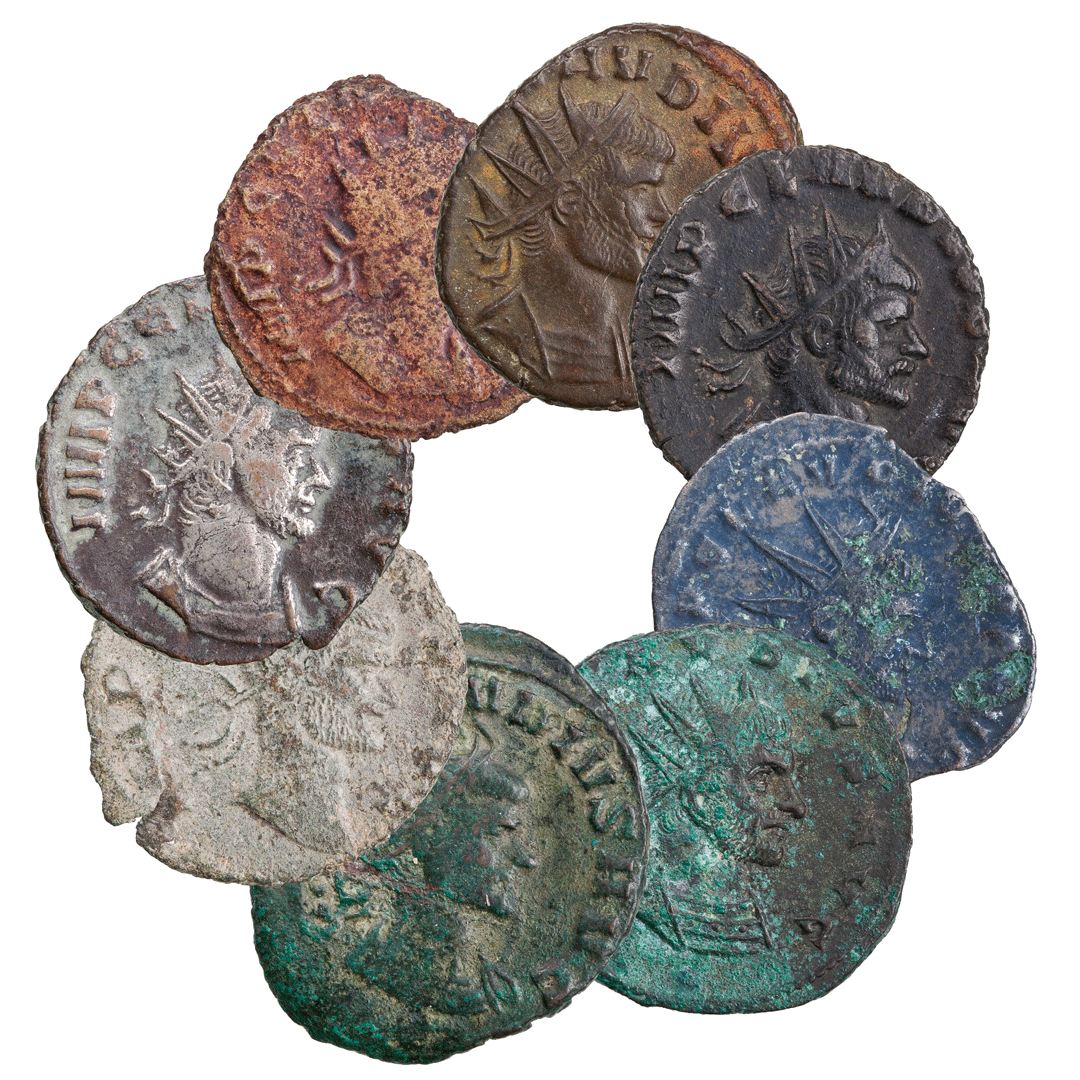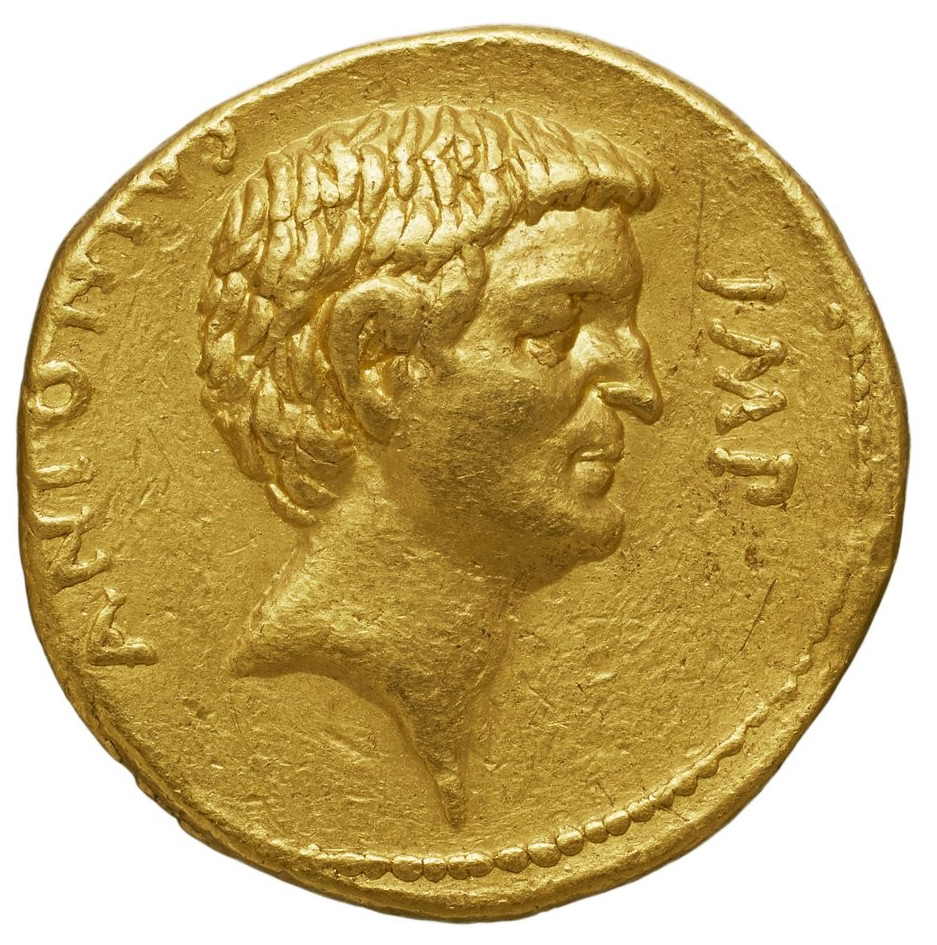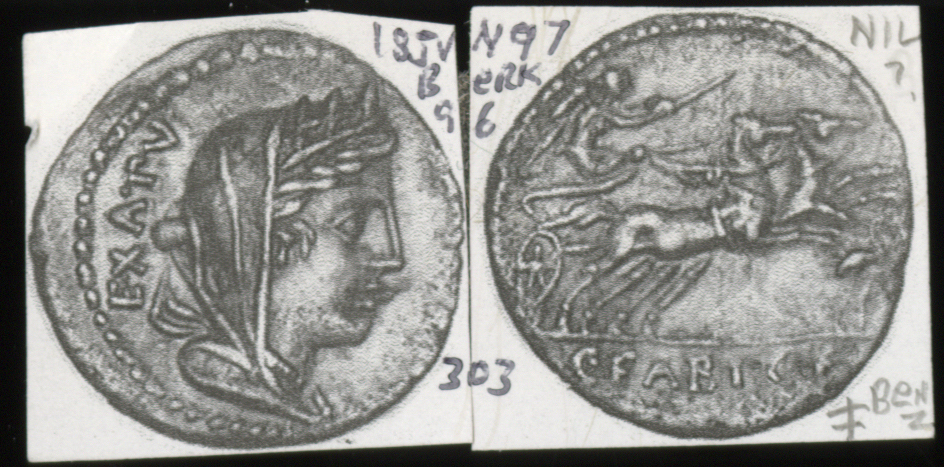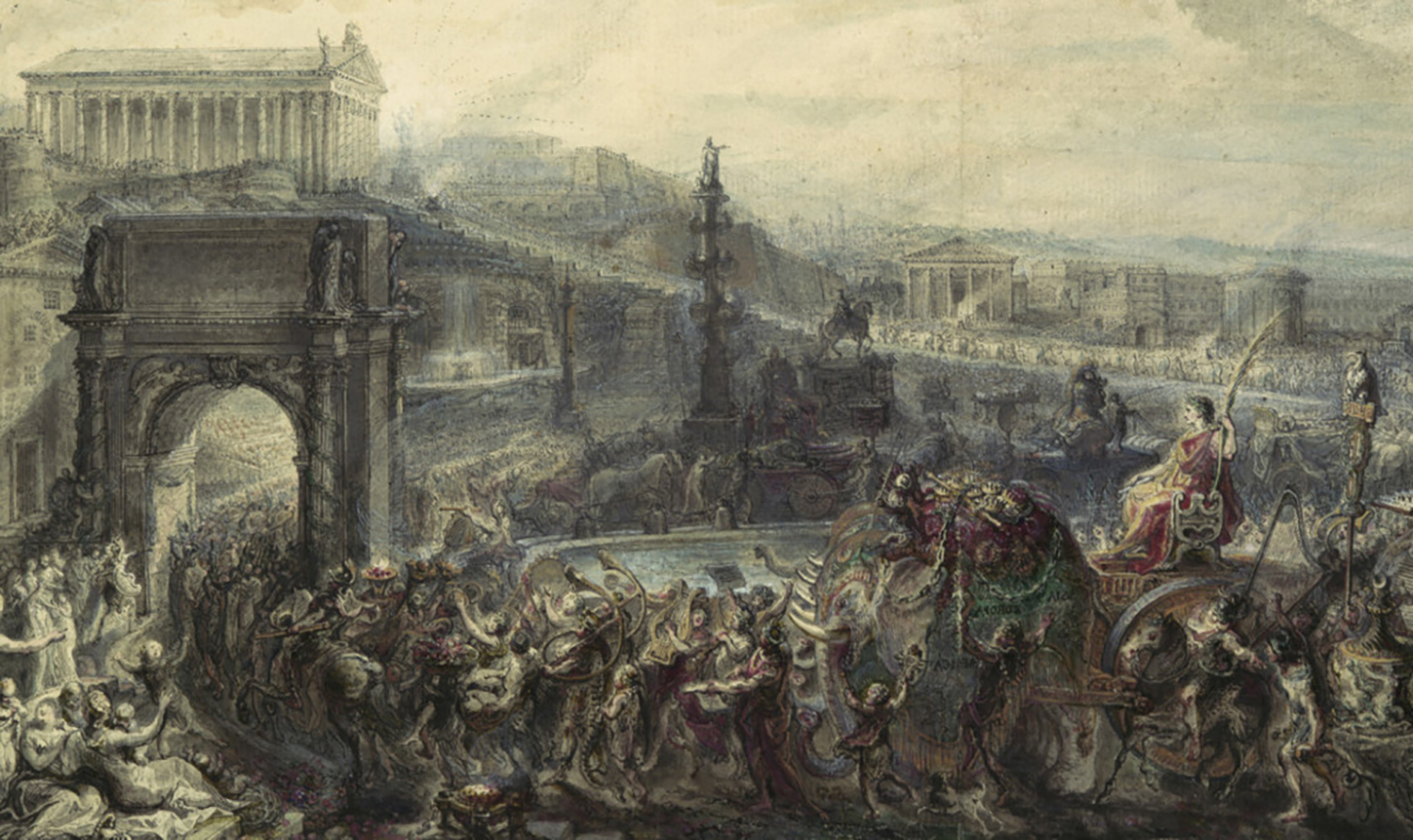Eight Antoniniani of Claudius Gothicus, 268-270 CE
Marcus Aurelius Claudius (213-270 CE) was an Illyrian of modest birth who worked his way up through the ranks of the Roman army during the tumultuous third century. According to the Scriptores Historiae Augustae, he was a fierce fighter and able commander who eventually became caught up in the imperial intrigues of the day. Claudius was commander of the the reserves of a force led by the reigning Emperor Gallienus in the summer of 268 that was besieging Milan, where the would-be usurper Aureolus had taken refuge. The supposed inefficacy of Gallienus as a ruler led to a conspiracy that ended in his assassination.

Whether or not Claudius was involved remains unclear, but he was the one chosen by the army to succeed Gallienus. In what was perhaps a related move, the Scriptores Historiae Augustae reports that the soldiers were promised twenty aurei each for their support. Claudius quickly made peace with Aueolus and then just as quickly betrayed and killed him. He then turned his attention to one of the many external threats facing the Roman Empire, namely an invasion of Pannonia by the Goths. It was in this context that Claudius earned the surname Gothicus (i.e. conqueror of the Goths) by which he is now commonly known after destroying a large Gothic army at the Battle of Naissus. Claudius thereafter quashed an incursion of Germanic tribes at the Battle of Lake Benacus and successfully campaigned to restore territories that had been lost by his predecessors to the Empire. The celebrated reign of Claudius Gothicus was ultimately brief, as he was felled by the so-called “Plague of Cyprian” (probably smallpox) in early 270.
The antoninianus was a new domination of silver coin that was introduced amidst the financial crises that gripped the Roman Empire in the early third century. Over the course of time it was debased until it was mostly bronze. As you can see by the mixed patinas of the eight antoniniani issued under the authority of Claudius at the top of this post, the metal content varied.
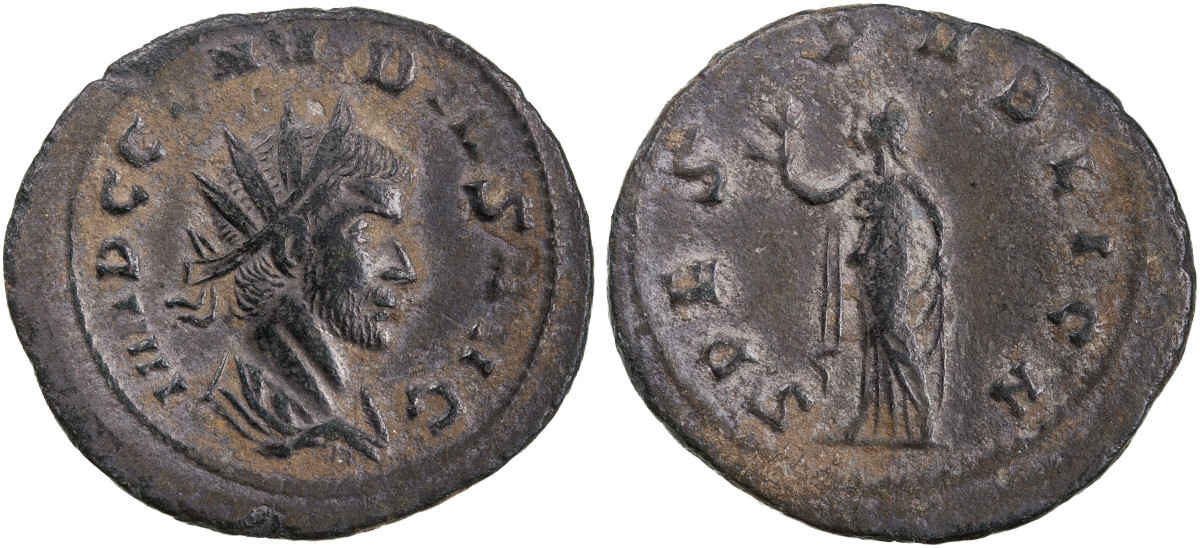
The common obverse features a radiate bust of the Emperor and Roman Imperial Coinage lists dozens of reverse types. The example above (RIC 168) was minted in Mediolanum (Milan) and its reverse features Spes, the personification of hope, holding a flower.


